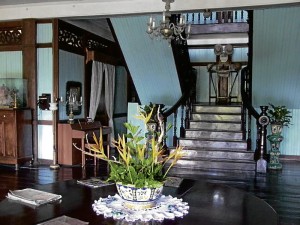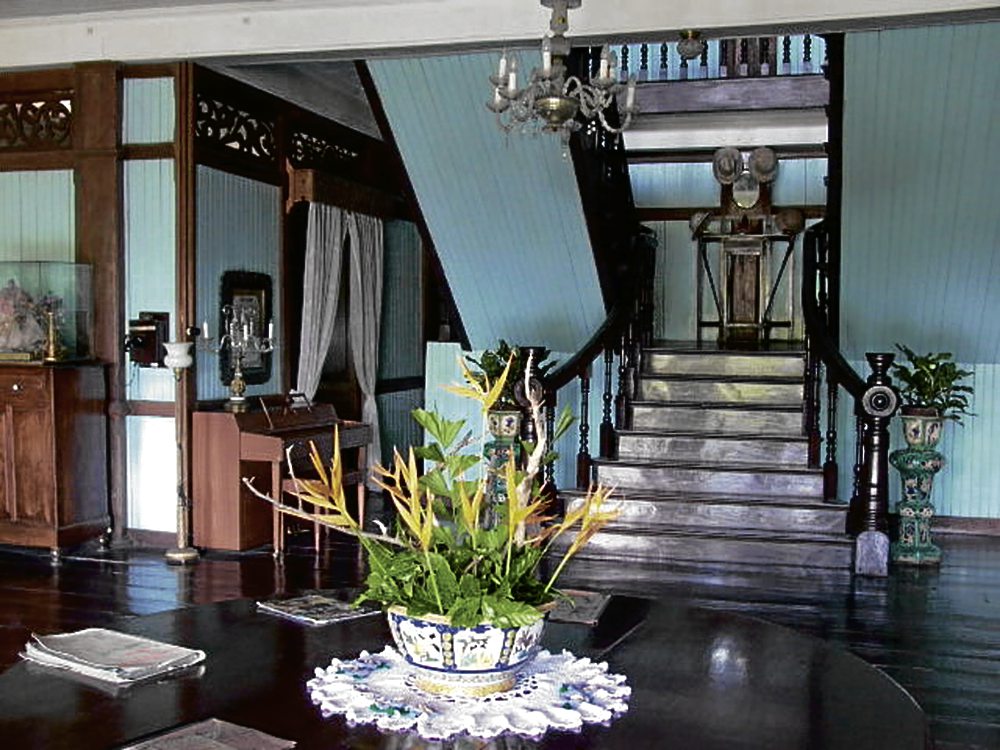
Silay City is a third-class city in Negros Occidental. According to the 2010 census, it had a total population of 120,999 people. It has a sizable commercial and fishing port, and is the site of the new Bacolod-Silay International Airport, which replaced the Bacolod City Domestic Airport.
Residents lovingly call their city the “Paris of Negros.” It is a city where the lifestyle of wealth and refinement encouraged its evolving into the “cultural and intellectual hub of Negros,” where artists prospered within the large number of art-filled heritage mansions built during the sugar industry’s success (and excess) that still survive today.
More than 30 mansions have been declared as historical landmarks, nationally distinguishing Silay as one of the few heritage cities in the country.
Most notable among these houses is the Balay Negrense, once the mansion of the Yves Leopold Germain Gaston family from France, one of the first Negrense sugar barons.
The Gaston mansion is only one of many. Others are the Bernardino-Ysabel Jalandoni House, which displays an extensive doll collection; the Manuel Severino Hofileña House, which displays a collection of artifacts; and many other sugar planters’ mansions that are not open to the public.
El Ideal Bakeshop, inside an elegant, old Silay building, serves traditional Negrense cuisine—the iconic lumpia and local sweets like piaya, meringue and barquillos.
The houses in the heritage quarter of Silay tell one chapter of the city’s story. This is the chapter of Silay’s golden age, when the sugar industry boomed, when the Silaynon lifestyle blossomed in celebration of new prosperity that peaked in the late part of the 19th century through the first few decades of the 20th.
This chapter is probably thought of by most Silaynon hacienderos as the highlight of their history, when prominent families constructed new homes to reflect their new wealth that brought about a heightened standard of living, wealth that allowed anything to happen, even bringing entire opera companies to perform in Silay.
A number of those homes built during the golden days still stand today, proof that Silay was a renaissance city of economic and cultural power.
Change
Times and lifestyles change. Not many families continue to live in their ancestral homes, and those who continue living in those homes face realities that their ancestors might never have thought would happen.

Large houses require constant maintenance, which is difficult to do these days. Gone are the retinues of household help that work all day just to keep the house clean.
What were materiales fuertes that built grand mansions a century ago now have decayed and deteriorated, and must be replaced.
Today, the same species of stone or wood are no longer available, nor is the skill that crafted those materials into homes. These days, it has become a responsibility, and more of an expensive liability, to own a heritage house.
While conservationists rightly crusade for the preservation of heritage houses, homeowners, on the other hand, wonder what to do with the heritage monsters that remain in their possession: how to maintain these crumbling structures, to meet the cost of specialized restoration that must be done, and how to make these white elephants at least earn their upkeep.
That today many old houses are decaying, boarded up, or empty does not augur well for the future of these aging ladies of Silay.
Finding new use for these aging ladies is the answer. Old homes can be made relevant to the community in a new way, as offices, clinics, schools, bed-and-breakfasts, or whatever function its owners may think of, provided that the original features of the architecture are not compromised or changed beyond recognition.
It is time for the Silaynon to take a good look at the city’s heritage assets, ranging from its architecture, lifestyle, cuisine and culture, and to realize that these assets are unrecognized generators of economic development that can be used to uplift many sectors of the Silay community.
It is time for these aging ladies of Silay to rethink their world view, and to realize that only by thinking out of the box can they make a solid contribution to contemporary Silay that will achieve the same economic and cultural impact that their ancestors did a century ago.
Thinking out of the heritage box is not only for aging Silay homes but for the entire population of Silay, which needs to realize that its heritage capital is a community development resource waiting to be tapped.
Silay is one of those great and special Philippine places. When walking its streets, the feel of the city, its people, and its story come at you strongly.
There aren’t too many cities left in the Philippines that still communicate that, which is the reason why Silaynons should do all they can to keep their city the way it presently is, because it’s the quality that makes not only their city but also themselves special.
The challenge for Silay is for it to keep part of its vision on guarding and preserving its aristocratic past, which is its very special heritage.
However, the other part of its vision should be looking firmly at the present, finding ways to make heritage drive its community and economy into the 21st century and beyond.
Comments are welcome at [email protected].









































